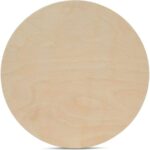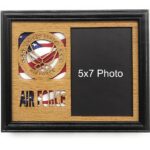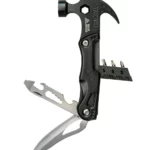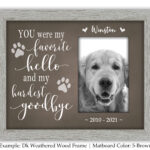I. Introduction to CNC Milled Aluminum Faceplates
II. Benefits of Using CNC Technology in Vintage Audio Gear Restoration
III. Choosing the Right CNC Milled Faceplate for Your Vintage Equipment
Introduction to CNC Milled Aluminum Faceplates
When it comes to restoring vintage audio gear, every little detail counts. One of the most noticeable features of any audio device is its faceplate. Imagine breathing new life into your beloved vintage amplifier or receiver with a shiny, CNC milled aluminum faceplate. But what exactly does that mean, and why should you care? Let’s dive into the fascinating world of CNC milled aluminum faceplates and discover why they’re an essential component in the restoration process.
First things first: CNC stands for Computer Numerical Control. This advanced technology allows for precision machining, meaning that every cut and engraving on the aluminum faceplate is executed with incredible accuracy. Unlike traditional machining methods, CNC machines are programmed to follow specific designs, ensuring a flawless finish that’s both functional and visually appealing.
What Makes Aluminum Special?
Aluminum is a popular choice for faceplates for several reasons:
- Lightweight: Aluminum is much lighter than other metals, making it easy to handle during restoration and installation.
- Durable: Despite its lightness, aluminum is surprisingly strong. It can withstand wear and tear, ensuring your restored gear lasts for years to come.
- Corrosion Resistant: Aluminum naturally forms a protective oxide layer, which helps it resist corrosion. This is especially important in vintage audio equipment, which might have been exposed to the elements over the years.
- Customizable: With CNC technology, you can create unique designs or replicate original artwork with stunning accuracy.
A Nod to Nostalgia
Restoring vintage audio equipment is more than just fixing what’s broken; it’s about honoring the history and craftsmanship of the past. CNC milled aluminum faceplates can help maintain that nostalgic feel while enhancing the overall aesthetic of your gear. Whether you’re working on a classic tube amplifier or a retro cassette player, a beautifully milled faceplate can make a world of difference in how the equipment looks and feels.
But it’s not just about looks. A well-designed faceplate ensures that all controls—knobs, buttons, and inputs—are positioned correctly and are easy to use. It’s all about functionality meeting style, creating a product that you’ll be proud to display and use.
Getting Started
So, how do you go about incorporating a CNC milled aluminum faceplate into your restoration project? First, you’ll want to consider your design options. Do you want to replicate the original faceplate, or are you feeling adventurous and want to create a custom design? There are plenty of resources available, including software that can help you visualize your ideas before they’re put into production.
Once you’ve settled on a design, finding a reputable CNC machining service is your next step. Look for companies that specialize in custom work and have a good track record in the audio restoration community. This ensures that you’ll receive a quality product that meets your expectations.
In summary, CNC milled aluminum faceplates are not just functional components; they’re an integral part of the restoration journey. They combine modern technology with a deep respect for vintage craftsmanship, allowing you to create stunning audio equipment that honors the past while standing the test of time. So, let’s get milling and start transforming that vintage gear into something truly spectacular!
Benefits of Using CNC Technology in Vintage Audio Gear Restoration
When it comes to restoring vintage audio gear, one of the most exciting advancements in technology has been the introduction of CNC (Computer Numerical Control) milling. This high-precision method has opened up a whole new world for audio enthusiasts looking to breathe life back into their cherished equipment. Let’s dive into the benefits of using CNC technology in this niche yet fascinating field!
Precision and Accuracy
One of the standout advantages of CNC milling is its ability to produce components with incredible precision. This is crucial for vintage audio equipment, where every millimeter counts. With CNC technology, you can expect:
- Exact Specifications: CNC machines can replicate the original faceplate designs down to the finest details, ensuring a perfect fit.
- Consistent Quality: Each piece produced is uniform, which is vital when replacing multiple components, as it maintains the integrity of your audio system.
Material Versatility
Another fantastic benefit of CNC technology is the variety of materials you can work with. While aluminum is a popular choice for audio gear, CNC machines can handle a range of materials, including:
- Brass: For those who prefer a vintage touch with a warm sound.
- Stainless Steel: Ideal for durability and a sleek finish.
- Plastic: Great for lightweight and cost-effective solutions.
This versatility allows restorers to choose the right material that not only fits the aesthetic of their vintage gear but also enhances performance.
Customizability
With CNC milling, the sky’s the limit when it comes to customization. Whether you’re looking to replicate the original design or want to give your audio gear a modern twist, CNC technology allows for:
- Unique Designs: You can customize faceplates to showcase intricate patterns or even personal engravings.
- Functional Additions: Need extra knobs or a different layout? CNC milling can accommodate these changes with ease.
This level of customization can turn an ordinary restoration project into a one-of-a-kind masterpiece!
Efficiency and Cost-Effectiveness
While many assume that CNC milling might be costly, it can actually save you money in the long run. Here’s how:
- Reduced Waste: CNC machines are highly efficient, cutting down on material waste, which can save you cash.
- Time-Saving: The speed of CNC milling means less time spent on each project, allowing you to tackle more restorations in less time.
This efficiency ensures that you can enjoy your vintage gear without breaking the bank or waiting ages for parts to arrive.
Enhancing Longevity
Finally, using CNC technology in restoration can lead to components that not only look good but also stand the test of time. CNC-milled parts are robust and built to last, meaning your restored vintage audio gear can continue to deliver exceptional sound quality for years to come.
In conclusion, CNC technology has revolutionized the way we restore vintage audio gear, offering incredible precision, a range of material options, and customized solutions. Whether you’re a seasoned restorer or just beginning your journey into vintage audio, embracing CNC milling can truly enhance your project and bring your beloved equipment back to life!
Choosing the Right CNC Milled Faceplate for Your Vintage Equipment
So, you’ve decided to give your vintage audio gear a little facelift with a CNC milled aluminum faceplate—great choice! But with so many options out there, how do you choose the right one? Don’t worry; I’m here to help you navigate through the process. Let’s dive in!
1. Consider the Specifications of Your Equipment
The first step in choosing the right CNC milled faceplate is to consider the specifics of your vintage equipment. Different brands and models have unique dimensions and mounting requirements, so it’s crucial to get the measurements right. Here are a few tips:
- Measure Twice: Grab a caliper or a good ol’ ruler and measure the existing faceplate (if you have it) or the area where the new one will be mounted. This ensures you’ll have the perfect fit.
- Note the Controls: Pay attention to the placement of knobs, buttons, and any display cutouts. You’ll want to make sure your new faceplate accommodates all of these elements seamlessly.
2. Choose the Right Design
Now that you have the measurements down, it’s time to think about design. CNC milled faceplates can be customized in various ways, and you’ll want one that reflects your style while paying homage to the vintage aesthetic. Here are a few design aspects to consider:
- Finish: CNC milled aluminum can come in different finishes, such as brushed, anodized, or polished. Consider which finish will best match your equipment and personal taste.
- Engraving Options: Many manufacturers offer engraving services. If you want to add a personal touch or recreate original branding, this might be the way to go!
3. Quality Matters
When it comes to vintage audio gear, quality is paramount. You want a faceplate that not only looks good but stands the test of time. Here’s how to ensure you’re investing in quality:
- Material Grade: Ask the manufacturer about the grade of aluminum they use. Higher-grade material means better durability and a more polished look.
- Manufacturer Reputation: Research companies that specialize in CNC milling for audio equipment. Look for reviews and testimonials to ensure they produce high-quality products.
4. Budget Considerations
While it’s tempting to go for the cheapest option, remember that you often get what you pay for. CNC milled faceplates can range in price, depending on factors like material, design, and customization. Here’s how to balance your budget:
- Set a Range: Determine how much you’re willing to spend before you start shopping. This will narrow down your options and help you make a decision more easily.
- Compare Options: Don’t settle on the first thing you see. Compare different manufacturers and their offerings to find the best value for your investment.
5. Installation Considerations
Finally, think about how the faceplate will be installed. Some faceplates come with easy installation instructions, while others might require a bit more finesse. Make sure you’re comfortable with the installation process or have a handy friend who can help!
Choosing the right CNC milled faceplate for your vintage audio gear can be a fun and rewarding process. By considering specifications, design, quality, budget, and installation, you’ll be well on your way to giving your gear a stunning new look. Happy restoring!









Comments